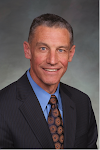
The United States is facing the greatest economic challenge since the great depression. The decision made by congress in the next few days will be the most important one made this year. A crisis of this magnitude mirrors in many ways a grief process. These stages include, anger, denial, blame, bargaining and acceptance. Many of these have been reflected by constituents and callers to talk shows in recent days.
The stark reality is that we are in a situation that must be dealt with and time is not necessarily on the side of policy makers. The present day situation is being dealt with in the midst of a global economy. The world really is watching as we address this issue. At risk are foreign assets that could impact worldwide markets as well as our own. The ripple effect of people losing their homes, their jobs, mass sell offs in the stock market and a loss of confidence in the banking system would not be something quickly or easily overcome. This problem is not just Wall Street, it impacts main street America as well.
I recall my days on the board of a financial institution and seeing first hand the impact of defaulted loans and uncollectable debt. What was surprising was the huge impact on the entire institution of small percentage of bad loans. That is what we are facing on a national magnitude. No one likes the feeling of being victimized by the actions of individuals, policy makers or businesses. The reality is, that is where we are in this situation. I heard one senator quoted as saying, “I don’t like the bailout proposal, but I don’t see any other viable options on the table.”
This challenging situation, this financial crisis that will impact all Americans, calls for a time of bipartisanship at its best. I’m not sure about you, but as specific ideas and proposal are discussed, I am praying for clear thinking and wisdom for our national leaders.
The stark reality is that we are in a situation that must be dealt with and time is not necessarily on the side of policy makers. The present day situation is being dealt with in the midst of a global economy. The world really is watching as we address this issue. At risk are foreign assets that could impact worldwide markets as well as our own. The ripple effect of people losing their homes, their jobs, mass sell offs in the stock market and a loss of confidence in the banking system would not be something quickly or easily overcome. This problem is not just Wall Street, it impacts main street America as well.
I recall my days on the board of a financial institution and seeing first hand the impact of defaulted loans and uncollectable debt. What was surprising was the huge impact on the entire institution of small percentage of bad loans. That is what we are facing on a national magnitude. No one likes the feeling of being victimized by the actions of individuals, policy makers or businesses. The reality is, that is where we are in this situation. I heard one senator quoted as saying, “I don’t like the bailout proposal, but I don’t see any other viable options on the table.”
This challenging situation, this financial crisis that will impact all Americans, calls for a time of bipartisanship at its best. I’m not sure about you, but as specific ideas and proposal are discussed, I am praying for clear thinking and wisdom for our national leaders.

